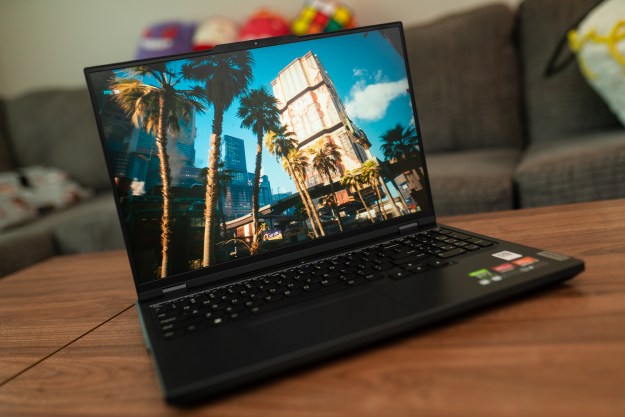“Gamers are a passionate group,” explained Ajit Sivadasan, Lenovo’s Vice President of Global eCommerce, who conceived of the project.
Although not much of a gamer himself, Sivadasan recognized the ever-increasing cultural importance of gaming, and the immense potential of the Internet to bring large communities together in unprecedented ways. He told Digital Trends he had conceived of Game State as an experiment to leverage this potential energy for a new kind of community-driven development. “Dark Rift,” a small team comprising former Blizzard developers, “was a perfect fit for this project” because of its AAA pedigree combined with a willingness to go out on a limb with an unusual process.
Game State is an unprecedented effort, not just for Lenovo, but for game design.
Game State’s first project is a 3D action tower-defense game, somewhat reminiscent of Dungeon Defenders, but with a science-fiction theme as opposed to fantasy. The rough concept for the game was already sketched out before the project launched this past November, so Lenovo’s assembled community has helped flesh out the particulars.
The process has been divided into four “Missions,” each lasting for one month and focusing on a particular area of the game’s development. The team at Dark Rift share their work on each element of the game, then open it up to feedback from the Game State community. Fan suggestions throughout the process are submitted and uploaded to a community site, where people can comment on and upvote suggestions in order to arrive at popular consensus.
The first mission, “The Good Guys, the Bad Guys, and the Weapons” focused on the conceptual design of the world and its characters, both heroes and villains. Mission 2, “Defend Your Territory,” looked at the game’s level designs and environments. Mission 3, “Live or Die,” which is currently running, is focused on weapons and the more cosmetic elements of the game, such as lighting and effects. Finally, Mission 4 will entail actually playtesting the resulting game.

Sivadasan is most proud of the community Game State has amassed already. More than 10,000 users are actively engaged in the project, checking in daily for an average of three minutes at a time to see the latest developments. Lenovo drew those numbers by tapping four partners already deeply embedded in the Internet gaming community: Geek & Sundry, Rooster Teeth, Machinima, and Funhaus.
Game State is an unprecedented effort, not just for Lenovo, but for game design. Early access has become an increasingly common way for smaller developers to get their games into the hands of players for feedback before release, but that generally happens only after the core of the game itself has been more thoroughly developed. Apart from fringe cases like the bizarre #IDARB, there are no major examples of crowd-sourced development quite like this — especially none with the backing of a major hardware player like Lenovo.
Lenovo has simultaneously been following a more traditional route into hardware with its Y-Series gaming gear, developed in partnership with the vets at Razer . Sivadasan told us that the next step for Lenovo’s gaming hardware business is to allow a greater degree of customization to its customers. “Choosing exactly the components you want is one of the big appeals of PC gaming,” Sivadasan says. “We want to provide for that sense of personal investment, to a limited degree.”
What’s the future for Lenovo Game State? “We’ve been very pleased by the response from the community, and will likely announce more projects later this year. STEM [Science, Technology, Education, and Math] education is obviously a hugely important area now, and could be a great focus for a project like this.”
Editors' Recommendations
- As the internet raged, game developers at GDC screamed for change
- Lenovo just made my favorite gaming laptop even better
- The studio behind Deathloop and Dishonored is developing a Blade game
- This is the best Lenovo gaming PC you can buy
- The best Lenovo gaming laptops you can buy right now


